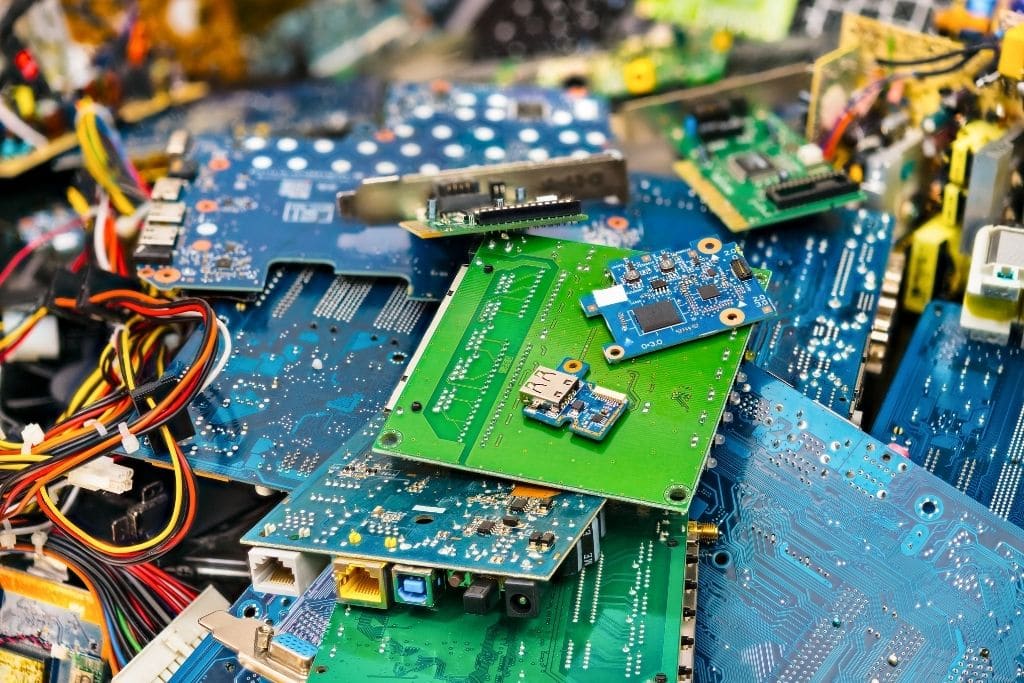-
Новости
- ИССЛЕДОВАТЬ
-
Статьи пользователей
-
Мероприятия
Electronic Waste Recycling Laws and Regulations Explained
Introduction to Electronic Waste Recycling Laws
Electronic waste, or e-waste, refers to discarded electronic devices like smartphones, computers, and televisions. With technology rapidly evolving, the volume of e-waste has skyrocketed globally. This article delves into the various laws and regulations governing electronic waste recycling, emphasizing the need for stricter measures to protect the environment and conserve resources.
Importance of Electronic Waste Recycling
Environmental Impact of E-Waste
E-waste contains hazardous materials such as lead, mercury, and cadmium that can leach into the environment, contaminating soil and water. Proper recycling minimizes these risks and helps recover valuable resources like gold, silver, and copper.
Economic Benefits of Recycling Electronics
Recycling reduces the need for raw material extraction, saving energy and reducing greenhouse gas emissions. It also fosters job creation in the recycling and refurbishment sectors, driving economic growth.
Key Global Electronic Waste Recycling Regulations
The Basel Convention
Adopted in 1989, the Basel Convention aims to control the transboundary movement of hazardous waste, including e-waste. It ensures waste is managed in an environmentally sound manner and prevents illegal dumping in developing nations.
The European Union’s WEEE Directive
The Waste Electrical and Electronic Equipment (WEEE) Directive mandates manufacturers to take responsibility for the end-of-life management of their products. This regulation has significantly improved recycling rates across EU countries.
U.S. State-Level E-Waste Laws
In the United States, e-waste regulations vary by state. For example, California’s Electronic Waste Recycling Act requires consumers to pay a recycling fee at the time of purchase, funding proper disposal and recycling initiatives.
Implementation and Enforcement Challenges
Lack of Standardization
Globally, e-waste laws lack uniformity, creating challenges in enforcement and compliance. This inconsistency hinders effective recycling and leads to loopholes in waste management systems.
Non-Compliance Penalties
Penalties for non-compliance are often insufficient to deter violations. Strengthening these penalties and improving monitoring mechanisms can enhance adherence to regulations.
How Businesses Can Adapt to E-Waste Regulations
Creating a Circular Economy
Businesses can adopt circular economy principles by designing products that are easier to repair, refurbish, and recycle. This approach extends product lifecycles and reduces waste.
Adopting Extended Producer Responsibility (EPR) Policies
EPR policies hold manufacturers accountable for the entire lifecycle of their products, including post-consumer disposal. By integrating EPR, businesses can ensure sustainable waste management.
The Role of Consumers in Electronic Waste Recycling
Responsible Disposal Practices
Consumers play a crucial role in recycling by properly disposing of their electronics at designated collection centers. Awareness campaigns can educate individuals about the environmental impact of improper disposal.
Participating in Recycling Programs
Many manufacturers and retailers offer take-back programs or partner with certified recycling facilities. Consumers should utilize these programs to ensure responsible e-waste handling.
Innovations in Electronic Waste Management
Advances in Recycling Technology
Innovative technologies like hydrometallurgical processes and automated disassembly systems improve the efficiency and effectiveness of e-waste recycling, making it more sustainable.
Promoting Refurbishment and Reuse
Encouraging the refurbishment and resale of used electronics extends their lifespan, reducing the overall volume of e-waste and conserving resources.
Frequently Asked Questions (FAQs)
What qualifies as electronic waste?
Electronic waste includes any device with electrical or electronic components that are no longer functional or wanted, such as phones, laptops, and home appliances.
Are there penalties for not recycling electronics?
Yes, penalties vary by jurisdiction, including fines for improper disposal or failure to comply with recycling mandates.
How do e-waste regulations differ globally?
Countries implement varying rules based on their infrastructure, economy, and environmental priorities, with developed nations often having stricter laws.
What is Extended Producer Responsibility (EPR)?
EPR is a policy approach that holds manufacturers accountable for the entire lifecycle of their products, including recycling and disposal.
Can all e-waste be recycled?
While most e-waste can be recycled, certain materials or components may be challenging to process due to technological or economic constraints.
Where can consumers recycle their old electronics?
Consumers can utilize designated drop-off points, recycling centers, or participate in manufacturer take-back programs.
Conclusion: Moving Towards a Sustainable Future
Increased awareness and adherence to electronic waste recycling laws are vital for a sustainable future. Governments, businesses, and consumers must collaborate to ensure proper disposal and recycling, mitigating environmental harm and maximizing resource use.






